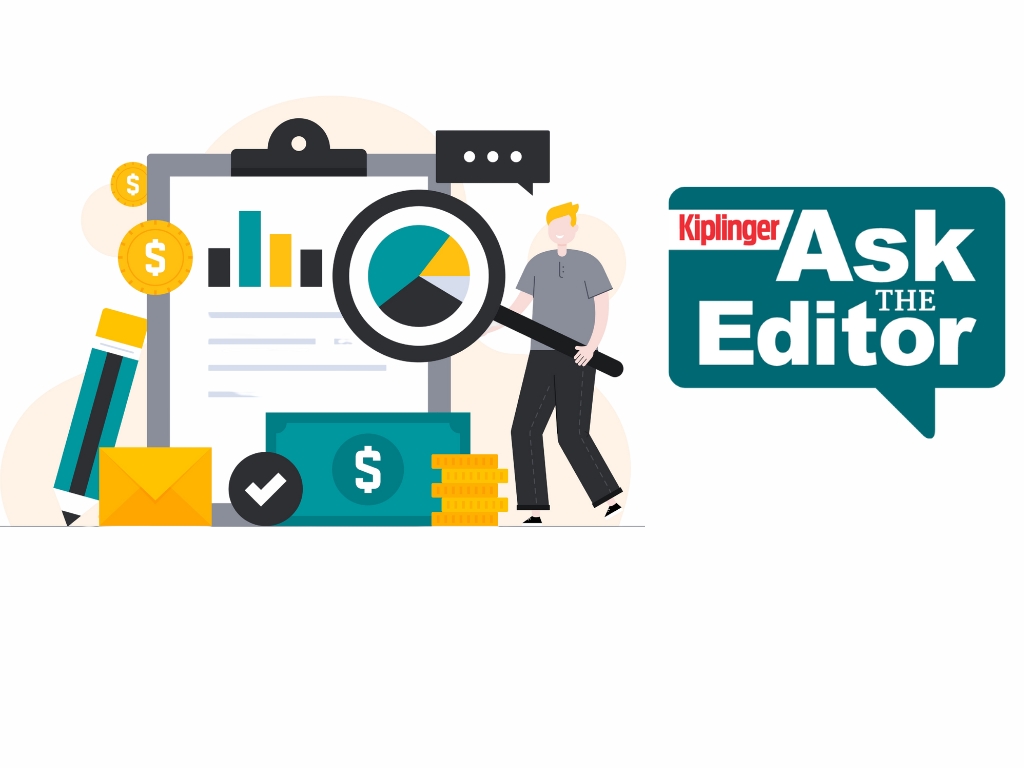Profits, Aisle 4
Supermarket chain Kroger benefits as cash-strapped consumers eat out less and watch what they buy.
A recession means more dinners at home in front of the TV and fewer nights on the town at the swankiest eateries. With more people trading their dinner menu for a bag of groceries, Kroger (symbol KR), the nation's largest supermarket chain, is reaping the benefits.
"Supermarkets are the ideal retailers right now because they're taking market share from so many different areas," says Jeff Auxier, manager of the Auxier Focus fund. "Discretionary dollars are going to food."
Food inflation is running higher than it has in more than 17 years, but that actually helps Kroger. The company is able to pass increases to its customers yet remain less expensive than its competitors because of a price-slashing program it implemented five years ago. That allows it to compete capably with Wal-Mart (WMT) on price.

Sign up for Kiplinger’s Free E-Newsletters
Profit and prosper with the best of expert advice on investing, taxes, retirement, personal finance and more - straight to your e-mail.
Profit and prosper with the best of expert advice - straight to your e-mail.
That foundation helped Kroger post an impressive 15% profit increase in the quarter that ended May 24 from the same period a year ago. The company earned 58 cents per share, beating analyst estimates of 55 cents per share. Net sales rose by 11.5% to $23.1 billion. Based on those positive results, Kroger revised its fiscal year 2009 guidance to a range of $1.83 85 to $1.90 per share (from $1.80 83 to $1.90 per share).
Investors like Auxier expect the tough economic times to last for a while, ensuring Kroger a steady stream of budget-conscious shoppers.
Aside from its attractive food prices, Kroger also benefits from the high cost of gasoline. With some 700 gas stations (at about 30% of its stores), Kroger offers incentives at the pump. The company noticed a trend among its customers to combine gas and grocery trips to save on fuel. Kroger now offers a discount of 10 cents per gallon on gas for every $100 spent at the store. "That's gone a long way toward improving its value image," says Mitchell Corwin, a Morningstar analyst who follows the stock.
Kroger is also pushing its private-label products as more of its shoppers trade down. The private label segment has increased its market share for 12 of the past 15 quarters. Seeing the greatest jump are Kroger's highest-quality items sold under the brand Private Selection. "The private-label products have gone from being copycats to a more premium position, so they're offering premium products at a good price," says Corwin.
Of course, Kroger isn't immune from the weak economy. The company has seen slipping sales in nonfood items such as jewelry, apparel and home furnishings sold most heavily in its Fred Meyer stores. "But it's still mainly groceries," says Pat Becker Jr., co-manager of the Becker Value Equity fund. "The majority of its inventory is consumer-staples items."
With so many pluses on Kroger's side, it's a wonder that its valuation hasn't seen a lift. The shares, which closed at $29 July 2, trade for 15 times the $1.93 per share that analysts, on average, estimate the company will earn in the 2009 fiscal year.
However, Kroger's growth opportunities are limited by the fact that it's purely a domestic operator. Its chief competitors, Wal-Mart and Costco (COST), have stores overseas that are growing much faster than the saturated U.S. food market. Tesco, the U.K.'s largest grocer, has recently arrived in the U.S. and is seeing fast growth here.
Kroger hasn't been an acquisition animal, either. Its growth comes largely from same-store sales. "They've bought a number of grocery stores in the past year," says Corwin. "That's accretive, but they're small, so it only adds a little bit to company earnings over time."
But in today's tough economic climate, slow and steady looks pretty good. "A double-digit grower can look like an absolute hero in a declining market," says Auxier.
Get Kiplinger Today newsletter — free
Profit and prosper with the best of Kiplinger's advice on investing, taxes, retirement, personal finance and much more. Delivered daily. Enter your email in the box and click Sign Me Up.
-
 Ask the Editor — Reader Questions on Tax Deductions, Losses
Ask the Editor — Reader Questions on Tax Deductions, LossesIn our Ask the Editor series, Joy Taylor, The Kiplinger Tax Letter Editor, answers readers' questions on tax deductions and losses.
-
 Upsizing in Retirement: Why You Should (and Shouldn't) Do It
Upsizing in Retirement: Why You Should (and Shouldn't) Do ItUpsizing, or buying a bigger home, can make your retirement feel more luxurious. There's room for grandkids and projects, but run the numbers carefully.
-
 Fed Leaves Rates Unchanged: What the Experts Are Saying
Fed Leaves Rates Unchanged: What the Experts Are SayingFederal Reserve As widely expected, the Federal Open Market Committee took a 'wait-and-see' approach toward borrowing costs.
-
 Fed Sees Fewer Rate Cuts in 2025: What the Experts Are Saying
Fed Sees Fewer Rate Cuts in 2025: What the Experts Are SayingFederal Reserve The Federal Reserve cut interest rates as expected, but the future path of borrowing costs became more opaque.
-
 Why Is Warren Buffett Selling So Much Stock?
Why Is Warren Buffett Selling So Much Stock?Berkshire Hathaway is dumping equities, hoarding cash and making market participants nervous.
-
 Fed Cuts Rates Again: What the Experts Are Saying
Fed Cuts Rates Again: What the Experts Are SayingFederal Reserve The central bank continued to ease, but a new administration in Washington clouds the outlook for future policy moves.
-
 If You'd Put $1,000 Into Google Stock 20 Years Ago, Here's What You'd Have Today
If You'd Put $1,000 Into Google Stock 20 Years Ago, Here's What You'd Have TodayGoogle parent Alphabet has been a market-beating machine for ages.
-
 Fed Goes Big With First Rate Cut: What the Experts Are Saying
Fed Goes Big With First Rate Cut: What the Experts Are SayingFederal Reserve A slowing labor market prompted the Fed to start with a jumbo-sized reduction to borrowing costs.
-
 Stock Market Today: Stocks Retreat Ahead of Nvidia Earnings
Stock Market Today: Stocks Retreat Ahead of Nvidia EarningsMarkets lost ground on light volume Wednesday as traders keyed on AI bellwether Nvidia earnings after the close.
-
 Stock Market Today: Stocks Edge Higher With Nvidia Earnings in Focus
Stock Market Today: Stocks Edge Higher With Nvidia Earnings in FocusNvidia stock gained ground ahead of tomorrow's after-the-close earnings event, while Super Micro Computer got hit by a short seller report.